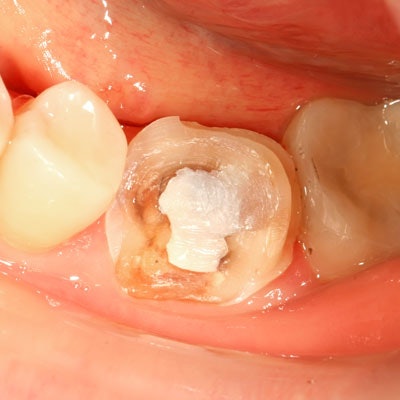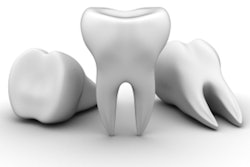
Has the failure rate of direct resin composite restorations in vital posterior teeth improved over the last decade or decreased? Researchers from Australia examined this important clinical question in a new literature review.
Researchers led by Negin Alvanforoush, DDS, studied the question in a literature review published in the Australian Dental Journal (November 16, 2016). With direct composite restorations becoming more popular, clinical data on what makes these restorations succeed or fail are increasingly needed.
"Since resin composites were introduced, there has been an ongoing challenge to improve their clinical performance, particularly for use in posterior teeth," the authors wrote. "This has seen the introduction of hybrid, packable, nanofilled, low-shrinkage, and bulk-fill composites, but still the clinical effectiveness of posterior composite is questioned by many."
Dr. Alvanforoush is a doctoral student from the Melbourne Dental School at the University of Melbourne.
Reasons for failure
Direct resin composite restorations are becoming more popular, as patients prefer tooth-colored restorations because they offer a superior aesthetic appearance, and patients want to avoid the placement of new amalgam in their mouths. The study authors noted that substantial advancements and changes in composite materials and adhesive systems have taken place over the last 20 years, but no systemic literature review has assessed the clinical performance of posterior composite restorations.
“The greater level of fracture may relate to the increase in size of restorations now being placed; however, more detailed data are needed.”
The researchers found 64 research papers using the following search terms on PubMed and Ovid Medline for two time periods (1995 to 2005 and 2006 to 2016):
- Clinical evaluation, clinical trial, or clinical success
- Class I restoration, class II restoration, or posterior composite
- Composite or resin composite
They also added an additional six papers that were cited in some of the 64 studies, bringing the total to 70 papers (30 in the first time period and 40 in the second).
The researchers looked at more than 3,000 restorations in the 1995-2005 time frame (319 failures) and 4,300 in 2006-2016 time frame (568 failures). They found that overall failure rates for all studied restorations was 10.59% for 1995-2005 and 13.13% for 2006-2016. The reasons for failure by time period are shown in the table below.
| Reasons for composite restorations failure | ||
| Reason | 1995-2005 (%) | 2006-2016 (%) |
| Secondary caries | 29.47 | 25.68 |
| Restoration fracture | 28.84 | 39.07 |
| Unknown | 13.17 | 4.31 |
| Postoperative sensitivity/pain | 11.6 | 0.96 |
| Wear | 9.4 | 1.43 |
| Tooth fracture | 3.45 | 23.76 |
| Clinically unacceptable marginal adaptation | 3.13 | 2.71 |
| Endodontic treatment | 0.63 | 2.07 |
A combination of two factors was considered the reason for failure in 110 restorations, the researchers reported.
Factors such as wear, postoperative sensitivity, and unacceptable marginal adaptation became less important as reasons for failure in more recent studies, they noted.
Longer assessment period
For study limitations, the authors wrote that, in the 1995-2005 period, an annual failure rate was rarely calculated, and the rate of unknown failure reason was relatively high compared with the second decade of the study. They also pointed out the need for longer assessment times for future studies, as other studies have noted that failure rates have tended to increase with a longer time frame.
The authors concluded that comparing the reasons for failure over the last two decades had revealed an important shift as secondary caries, postoperative sensitivity, and wear were reduced as failure factors in contrast with the increased role of tooth fracture, restoration fracture, and endodontic treatment as reasons for failure.
"The greater level of fracture may relate to the increase in size of restorations now being placed; however, more detailed data are needed," they wrote.



















